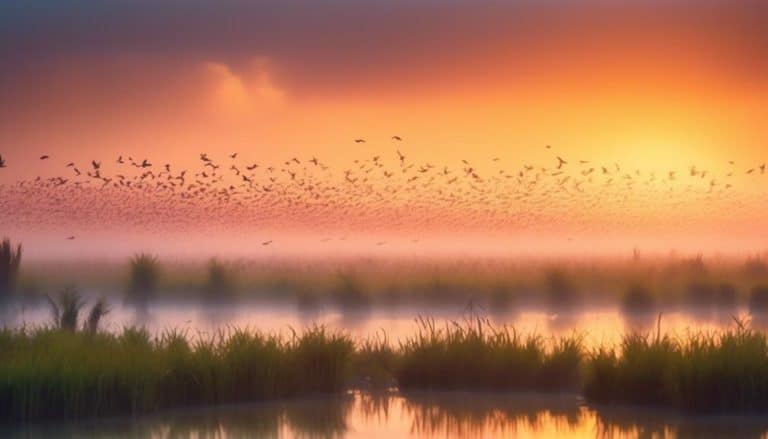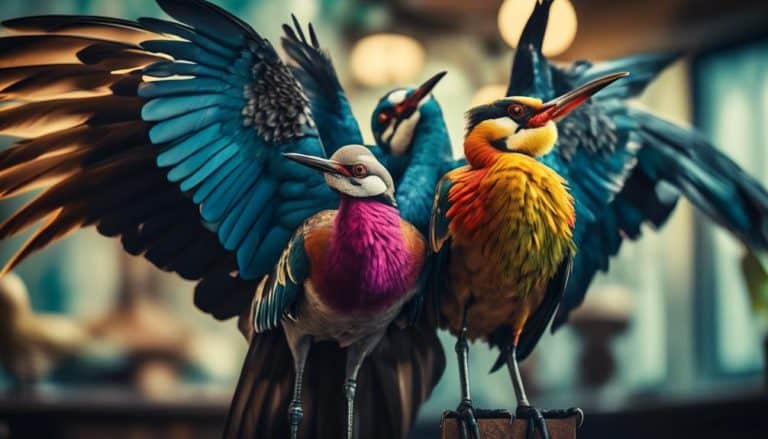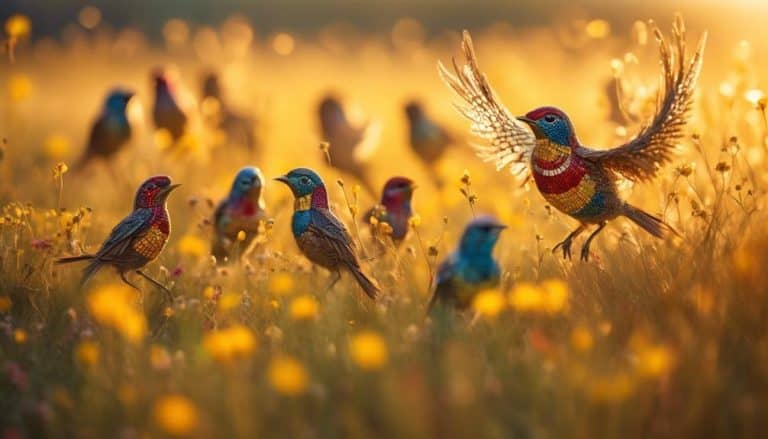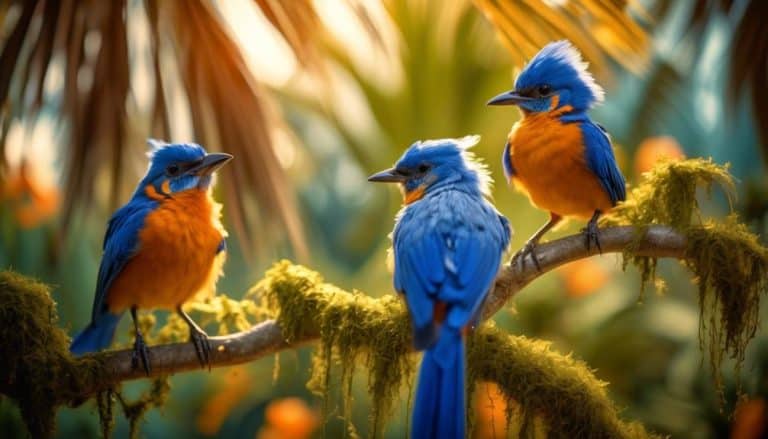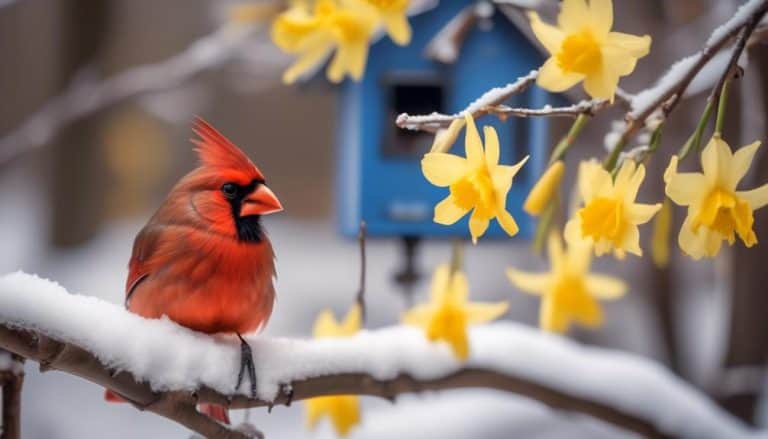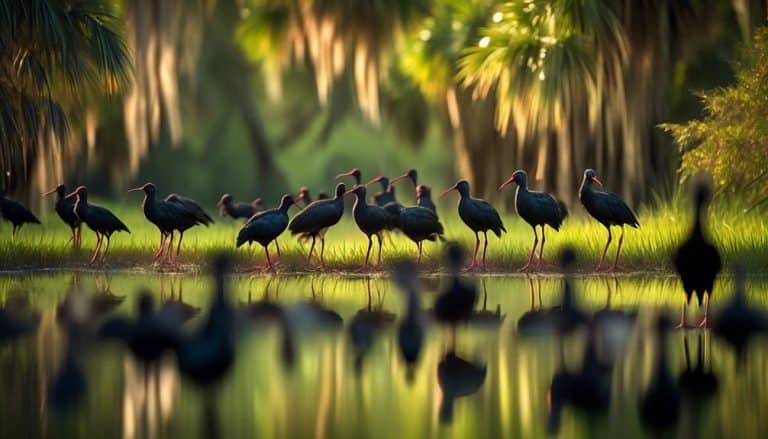As I stood on the sandy shores of Florida, the sun casting a warm glow on the glistening waves, I couldn't help but be reminded of the ethereal beauty that graces this land.
White birds, like whispers of elegance, dot the landscape, captivating the hearts of both locals and visitors alike. From the iconic Great Egret to the delicate Snowy Egret, the vibrant Roseate Spoonbill to the endangered Wood Stork, these magnificent creatures bring a sense of wonder and curiosity to the vibrant ecosystem of Florida.
But there is more to these white birds than meets the eye, and as I explore their presence in this diverse state, I invite you to uncover the secrets that lie within their majestic wings.
Great Egret: Florida's Iconic White Bird
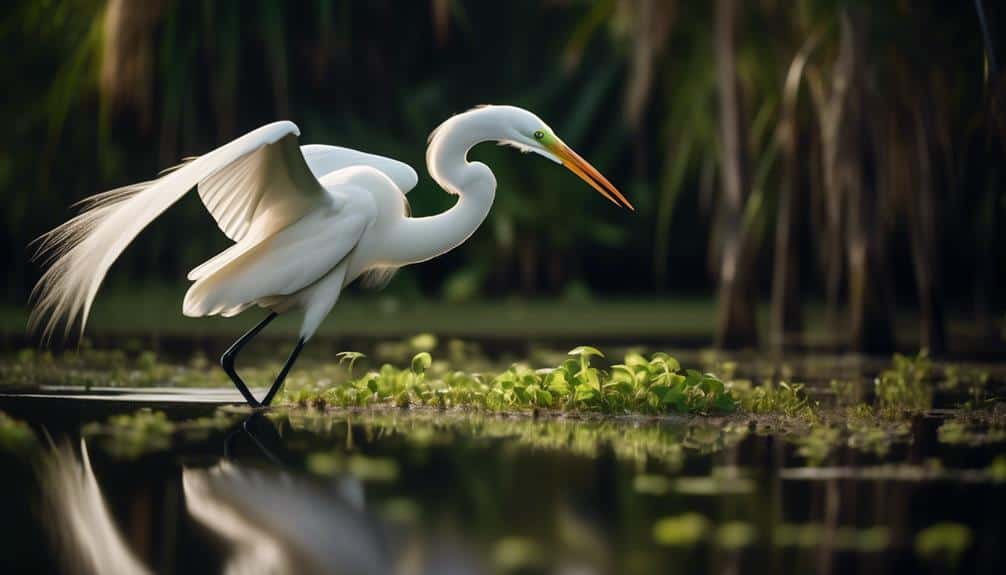
The Great Egret, Florida's iconic white bird, can often be spotted gracefully wading through the marshes and wetlands of the Sunshine State. With its elegant stature and striking white plumage, it stands out amidst the vibrant backdrop of Florida's diverse ecosystem. As an avid birdwatcher and conservationist, I've had the privilege of observing these magnificent creatures in their natural habitat.
Conservation efforts play a crucial role in protecting and preserving the Great Egret population in Florida. The state has implemented various measures to ensure the welfare of these birds, including the establishment of protected areas and the enforcement of strict regulations against hunting and disturbance of nesting sites. These initiatives have proven successful in promoting the recovery and stability of the Great Egret population.
When it comes to nesting habits, the Great Egret showcases remarkable behavior. They typically build their nests in colonies, often alongside other wading birds such as herons and ibises. These nests are constructed high up in trees, providing a safe haven for their offspring. The Great Egret displays exceptional parenting skills, with both parents taking turns incubating the eggs and caring for the young chicks.
White Ibis: A Common Sight in Florida
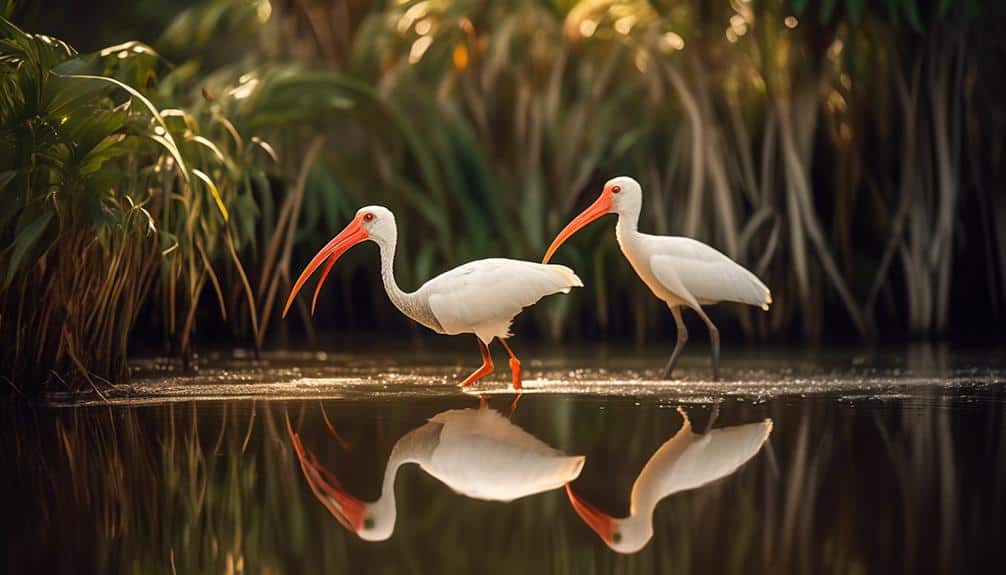
White Ibis, a familiar sight in Florida's wetlands and marshes, can often be seen foraging for food among the dense vegetation. These elegant birds, with their bright white plumage and long curved bills, are a common sight in the Sunshine State. They are highly adaptable and can be found in a variety of habitats, including freshwater marshes, coastal wetlands, and even urban areas.
| White Ibis | |
|---|---|
| Scientific Name | Eudocimus albus |
| Size | 22-27 inches |
| Weight | 2.6-3.2 pounds |
| Habitat | Wetlands, marshes, estuaries, and coastal areas |
| Behavior | Social, foraging in groups, probing for prey |
White ibis are highly social birds and can often be seen foraging in groups. They use their long, curved bills to probe the mud and shallow water for small invertebrates, fish, and amphibians. Their bills are specialized for this type of feeding behavior, allowing them to detect and capture prey hidden beneath the surface.
These birds are known for their distinctive breeding plumage, which includes a reddish-brown coloration on their heads, necks, and upper chests. During the breeding season, they gather in large colonies called rookeries, where they build nests in trees or shrubs near water.
Snowy Egret: Delicate Beauty in the Sunshine State
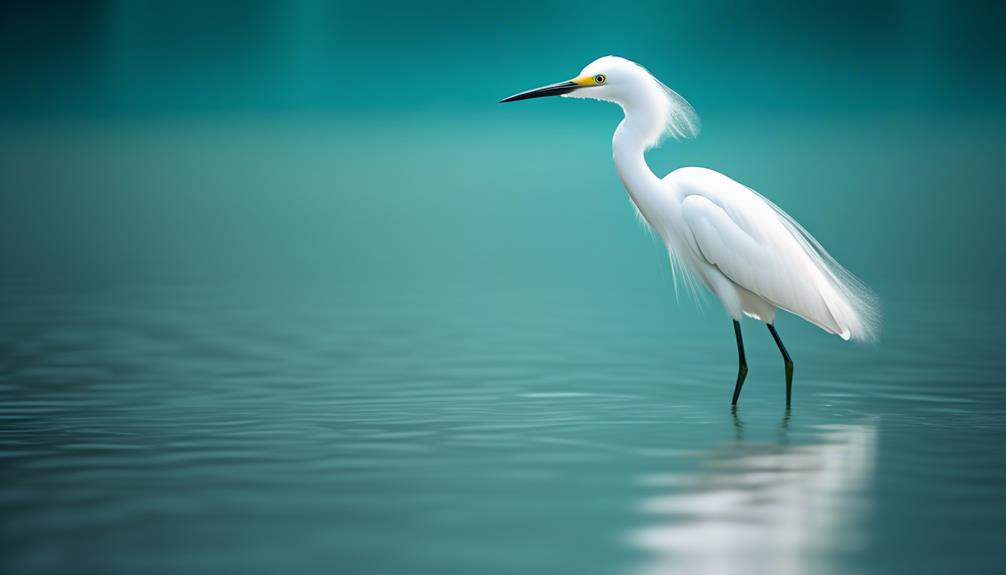
With its graceful stature and delicate plumage, the Snowy Egret adds a touch of elegance to Florida's diverse bird population. As a species of egret, it's a common sight for birdwatchers in the Sunshine State.
The Snowy Egret, scientifically known as Egretta thula, is a medium-sized heron that stands about 61 centimeters tall. Its most distinguishing feature is its beautiful white plumage, which contrasts strikingly against its bright yellow feet. These feet aren't just for show, as they're used to stir up prey in the water, making it easier for the egret to catch fish and other small aquatic creatures.
During breeding season, the Snowy Egret develops long, delicate plumes on its back that flow gracefully in the wind. These plumes were once hunted for their ornamental value, which led to a decline in the egret's population. However, conservation efforts have helped protect this delicate beauty, allowing us to continue to enjoy its presence in the Florida wetlands.
Wood Stork: Florida's Endangered White Bird
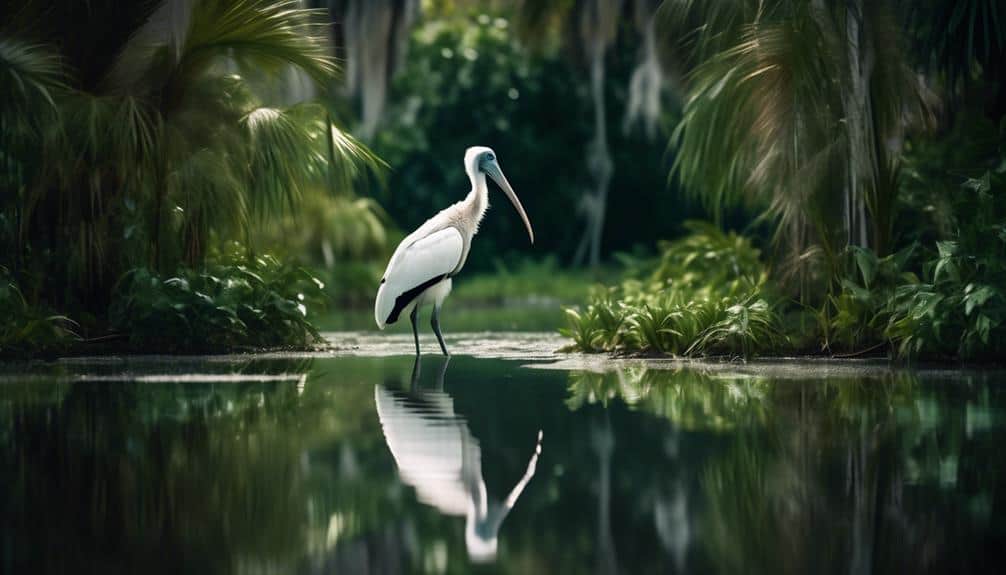
After admiring the delicate beauty of the Snowy Egret, it's crucial to shift our attention to another white bird species in Florida that faces the threat of endangerment: the Wood Stork.
The Wood Stork (Mycteria americana) is a large, wading bird with a distinctive bald head and a long, curved bill. This magnificent bird, once abundant throughout the state, is now listed as endangered due to habitat loss and degradation.
Wood stork conservation efforts have been underway to protect and restore their dwindling population. Wetland restoration projects have been implemented to provide suitable nesting and foraging habitats for these birds. Additionally, restrictions on logging and land development in their breeding areas have been put in place to safeguard their habitats.
However, despite these conservation efforts, the Wood Stork population still faces numerous threats. The draining of wetlands for agriculture and urbanization continues to destroy their natural habitats. Pollution from agricultural runoff and the use of pesticides further degrade their foraging grounds, impacting their food sources. Climate change also poses a significant threat, altering the availability of suitable breeding and foraging habitats.
Roseate Spoonbill: A Pink and White Wonder
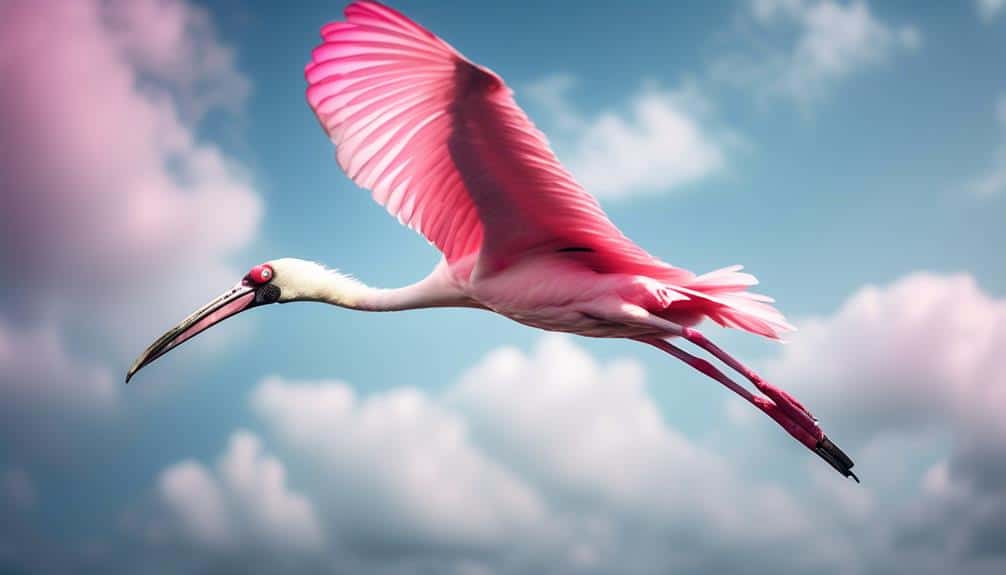
The Roseate Spoonbill, a fascinating pink and white bird, captivates observers with its unique appearance and graceful movements. Found primarily in the wetlands of Florida, this stunning species is a true wonder of nature. Here are a few key aspects that make the Roseate Spoonbill an extraordinary sight:
- Plumage: The Roseate Spoonbill boasts vibrant pink feathers on its body, which contrast beautifully with its snowy white wings. Its long, slender neck is adorned with a shaggy crest of feathers, giving it a regal appearance.
- Spoon-shaped bill: One of its most distinctive features is its spoon-shaped bill, which is used to forage in shallow water. This specialized bill allows the bird to sift through mud and water, capturing small fish, crustaceans, and insects.
- Flight: When in flight, the Roseate Spoonbill displays its magnificent wingspan of up to five feet. Its slow, deliberate wingbeats and graceful glides create a mesmerizing spectacle in the sky.
- Breeding colonies: These birds prefer to nest in large colonies, often alongside other wading birds. They build their nests in trees or shrubs, usually near water bodies, where they can find an ample food supply.
- Conservation efforts: Due to habitat loss and degradation, the Roseate Spoonbill faced significant declines in the past. However, through conservation efforts and wetland restoration, their populations have rebounded, and they're now considered a species of least concern.
The Roseate Spoonbill's unique appearance and its successful conservation story make it a true marvel of the avian world.
Frequently Asked Questions
How Many Species of White Birds Can Be Found in Florida?
In Florida, there are several species of white birds. The conservation efforts for these birds aim to protect their populations and ensure their survival in their natural habitats.
What Is the Average Size of White Birds in Florida?
The average size of white birds in Florida is quite impressive. Their population distribution spans across various habitats, showcasing their adaptability and resilience. It is fascinating to observe their size and behavior in their natural environment.
Are White Birds in Florida Migratory or Do They Stay Year-Round?
White birds in Florida, like other migratory species, are greatly impacted by climate change. Conservation efforts are crucial in protecting their habitats and ensuring their survival.
Do White Birds in Florida Have Any Predators?
White birds in Florida are vulnerable to predation. Conservation efforts are important to protect the white bird population. Predators such as alligators, raccoons, and snakes pose a threat to these birds and their habitats.
How Do White Birds in Florida Contribute to the Ecosystem?
White birds in Florida, such as the Snowy Egret, contribute to the ecosystem through their conservation efforts. They play a crucial role in maintaining the balance of aquatic ecosystems by controlling populations of fish and invertebrates.
Conclusion
In conclusion, the white birds of Florida are a captivating sight to behold. From the majestic Great Egret to the common White Ibis, these birds add a touch of beauty to the Sunshine State.
While some may argue that the presence of these birds is simply a result of their natural habitat, it's undeniable that their delicate features and vibrant colors create a harmonious and picturesque landscape.
The endangered Wood Stork and the stunning Roseate Spoonbill further exemplify the unique and diverse avian species found in Florida.


